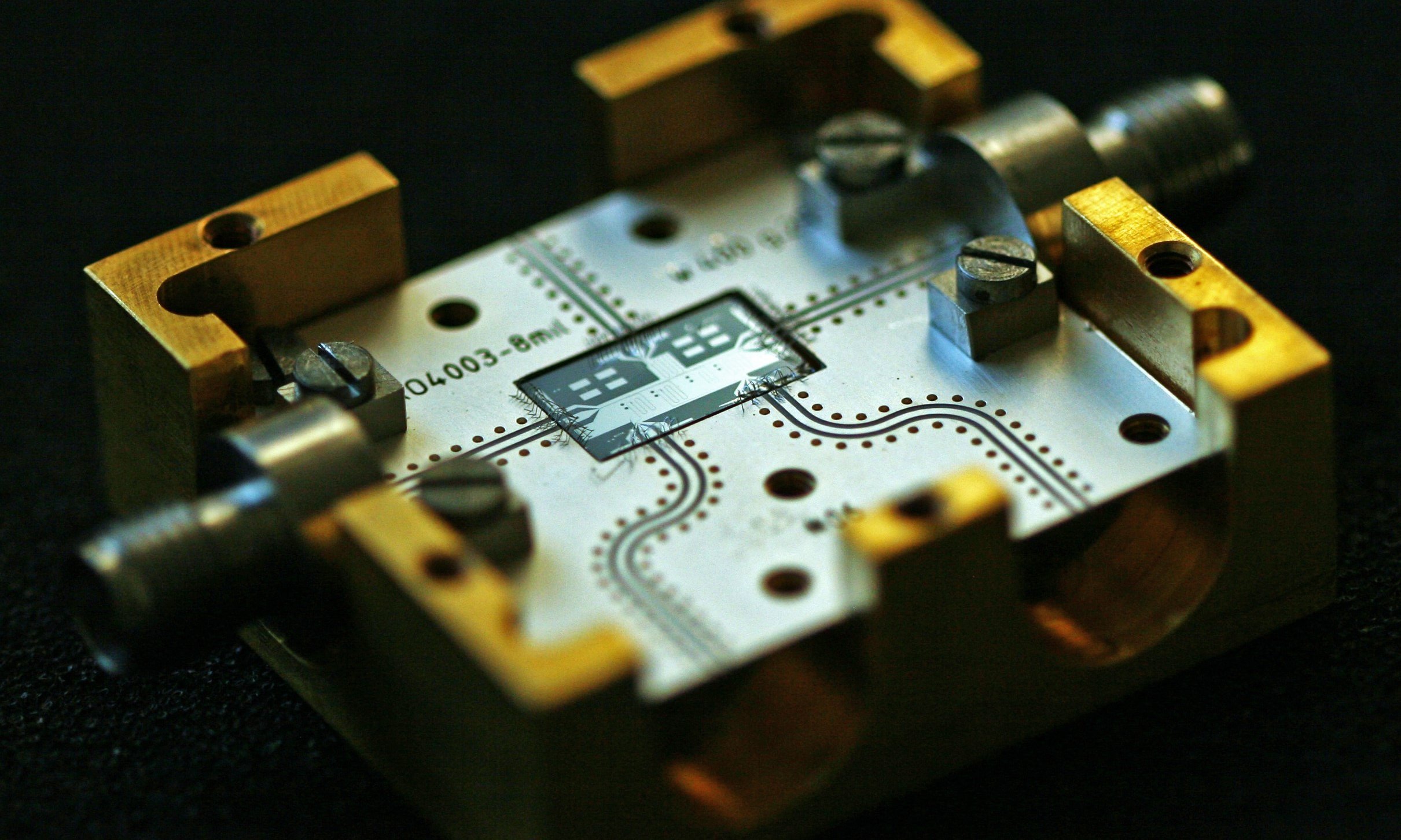Nano-Electromechanics
The field of nano-electromechanics explores the interaction of excitations in an electrical circuit with a displacement of a nano-mechanical object. The resulting sensing concept allows to investigate quantum mechanical phenomena in the literal sense, while interaction itself can be harnessed to synthesize quantum states in the electrical and mechanical entity. We realize nano-electromechanical systems in the form of nano-strings coupled to superconducting quantum circuits. The displacement of the nano-string controls the resonance frequency of the superconducting microwave circuit, realizing this interaction. While this coupling concept is vastly utilized in sensing applications ranging from simple force sensors to gravitational wave detectors, the nature of the coupling also allows for controlling and preparing mechanical oscillation states down to the quantum regime.

Team
Research Article
|
arXiv:2512.05873
Research Article
|
arXiv:2510.01775
Research Article
|
Applied Physics Letters
126, 043508
(2025)
Research Article
|
Journal of Applied Physics
138, 043906
(2025)
Preprint: arXiv:2503.22302
Research Article
|
Physical Review Letters
131, 043603
(2023)
Preprint: arXiv:2211.06289
At the Walther-Meissner-Institute, we explore two coupling stategies for the realisation of the nano-electromechanical interaction:
- a capacitive coupling scheme, where the displacement of the nano-string resonator changes the overall capacitance of the superconducting electronic circuit, and
- an inductive coupling scheme, where we utilize the tunable inductance of a superconducting interference device to realize this purpose.
With these integrated nano-electromechanical devices, we have demonstrated force sensitivities down to aN/sqrt(Hz) and coupling rates in the tens of kHz range. We utilize these platforms to investigate and understand the interaction itself, study the mechanical properties of the materials involved and realize literal quantum mechanical states.
